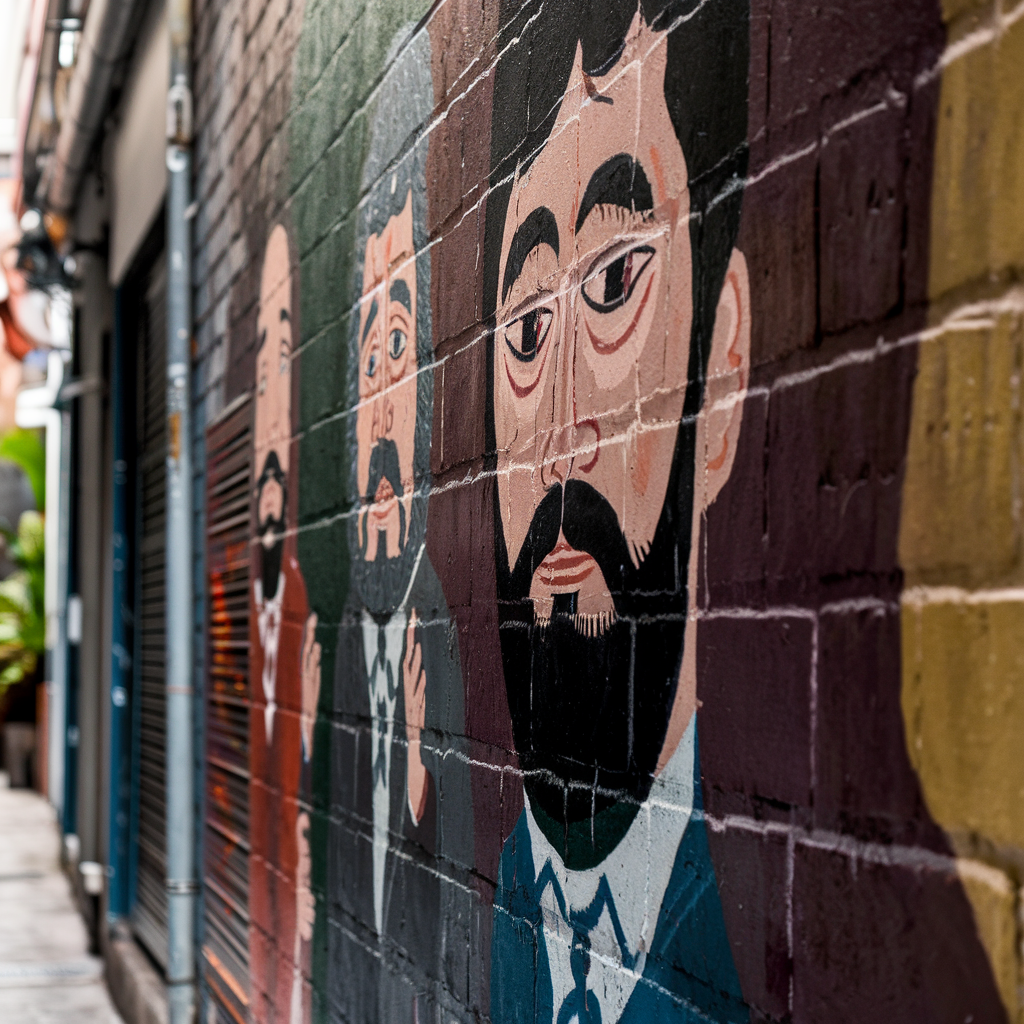Ciulioneros: Uncovering a Rich Cultural Legacy in Art and Heritage

In a world where modernity often overshadows tradition, the concept of ciulioneros stands as a vibrant reminder of the importance of cultural heritage. Rooted deeply in the arts and customs of a community, ciulioneros represent far more than an artistic expression; they symbolize a way of life, a lineage, and a collective memory that transcends generations. For anyone passionate about history, folklore, or the preservation of cultural practices, this exploration into ciulioneros will reveal why these traditional arts continue to captivate and inspire.
The Historical Roots of Ciulioneros
The origin of ciulioneros is steeped in history, with practices that date back centuries. Traditionally, ciulioneros emerged from the need to preserve stories, values, and customs through visual and performative arts. Early ciulioneros artisans were often craftsmen or storytellers within their communities, creating artworks, carvings, or tapestries that reflected their society’s collective values and beliefs. These artifacts have been carefully preserved, showcasing a time-honored commitment to cultural heritage that resonates with modern admirers.
Why Ciulioneros Are Significant in Cultural Heritage
Cultural heritage often serves as the foundation of a community’s identity, and ciulioneros are no exception. By capturing both the history and essence of a culture, ciulioneros provide a direct link to the past. These artifacts are often passed down from one generation to the next, embedding the traditions, beliefs, and artistry of ancestors within the present-day experience. The significance of ciulioneros extends beyond mere aesthetics; they embody stories of survival, transformation, and resilience that continue to shape the cultural landscape.
The Artistic Styles and Techniques of Ciulioneros
The artistry of ciulioneros is distinguished by intricate techniques and a focus on detailed craftsmanship. Various forms of ciulioneros art, including wood carving, textile work, and painting, showcase styles unique to specific regions or communities. These techniques often require years of practice and a deep understanding of both materials and symbolism. Each piece created reflects not only the skill of the artisan but also their dedication to the cultural narrative that ciulioneros represent. This diversity in styles enhances their cultural value, as each form adds a different perspective to the community’s shared heritage.
Symbolism in Ciulioneros and What It Represents
Symbols play an essential role in ciulioneros, with motifs that represent everything from local mythology to social values. Common symbols might include animals, nature scenes, or geometric patterns, each chosen for its particular significance within the culture. For example, an eagle may symbolize strength, while waves or flowing lines represent continuity. By incorporating such symbols, ciulioneros artisans communicate complex ideas and values in a way that transcends language, offering viewers a glimpse into the spiritual and moral frameworks of the culture.
How Ciulioneros Are Preserved and Displayed Today
Preservation is essential for ciulioneros, as these artifacts are often fragile and require specific conditions to maintain their integrity. Many ciulioneros are displayed in museums, cultural centers, and galleries, allowing the public to appreciate them while ensuring their protection. Community members, historians, and curators work tirelessly to preserve these pieces through careful restoration and climate-controlled environments. Additionally, workshops and educational programs provide opportunities for people to learn more about ciulioneros, fostering a sense of respect and admiration for their cultural significance.
The Role of Ciulioneros in Contemporary Society
While ciulioneros may be rooted in tradition, they continue to inspire modern audiences. Artists and cultural enthusiasts find in ciulioneros a source of inspiration that bridges the past with contemporary themes. Many artists incorporate ciulioneros techniques and motifs into their work, breathing new life into these ancient practices. For those outside the culture, ciulioneros provide a fascinating insight into a world shaped by traditions and values, highlighting universal themes of resilience, creativity, and human connection.
Educational Programs Promoting Ciulioneros
Educational programs have become a powerful tool in promoting ciulioneros, especially among younger generations. Schools and community organizations offer workshops and courses that teach students the techniques and history behind ciulioneros, ensuring that these practices remain relevant. Through these programs, students not only learn artistic skills but also gain an understanding of cultural heritage, fostering a sense of pride and connection to their roots. This engagement is critical for the survival of ciulioneros as it empowers young people to appreciate and carry on these practices.
The Process of Creating a Ciulioneros Masterpiece
Creating a ciulioneros piece requires both skill and patience, as artisans follow a meticulous process that honors traditional methods. Each piece begins with selecting high-quality materials, which often include wood, fabric, or natural pigments. Artisans then employ specialized tools to carve, paint, or weave intricate designs. The process demands precision, as each detail contributes to the overall meaning and beauty of the piece. Through this disciplined approach, ciulioneros artisans not only create visually striking works but also invest each piece with cultural significance.
The Impact of Ciulioneros on Local Economies
In regions where ciulioneros are celebrated, these art forms play an essential role in local economies. Artisans sell their works at markets, cultural festivals, and online platforms, bringing in income that supports their communities. Many visitors purchase ciulioneros as souvenirs, captivated by the beauty and cultural depth of these pieces. In this way, ciulioneros contribute to economic sustainability by creating opportunities for artisans and promoting local tourism.
Exploring Ciulioneros Through Festivals and Events
Festivals and cultural events provide a unique opportunity to explore ciulioneros in an immersive setting. During these events, artisans showcase their work, share techniques, and connect with visitors from around the world. Such gatherings often feature performances, storytelling, and workshops, allowing people to experience ciulioneros in a lively, interactive environment. These festivals celebrate the enduring relevance of ciulioneros, fostering cultural exchange and understanding between communities.
Preservation Challenges Faced by Ciulioneros
Despite their cultural value, ciulioneros face challenges in preservation. Factors such as environmental exposure, aging materials, and limited funding for restoration can put these artifacts at risk. Furthermore, a decline in the number of skilled artisans poses a threat to the continuity of these practices. To address these challenges, organizations are working to secure funding, train new artisans, and develop innovative preservation methods that ensure ciulioneros remain accessible to future generations.
How Technology is Helping to Preserve Ciulioneros
Technology has become a vital resource in preserving and promoting ciulioneros. Digital platforms allow for the documentation and sharing of ciulioneros art, while virtual tours and online galleries make these artifacts accessible to a global audience. 3D scanning and printing technology are also being used to create replicas for educational purposes, reducing the risk of damage to original pieces. This blend of tradition and technology ensures that ciulioneros can be appreciated and studied worldwide, protecting their legacy for years to come.
Cultural Exchange and Ciulioneros Beyond Borders
Ciulioneros are not only appreciated within their community but are also celebrated internationally through cultural exchange programs. Exhibitions in foreign museums, collaborations with international artists, and educational exchanges bring ciulioneros to a broader audience. This exchange fosters mutual understanding and appreciation, showcasing the unique qualities of ciulioneros while emphasizing the universal themes they represent.
Learning the Language of Ciulioneros
For those new to ciulioneros, understanding its visual language can deepen appreciation. Workshops and art classes often focus on teaching the meaning of common symbols and motifs, enabling participants to interpret the messages embedded in each piece. By learning this visual language, viewers can connect more meaningfully with ciulioneros, gaining insights into the cultural context that shaped these masterpieces.
A Look at Iconic Ciulioneros Artisans
Many ciulioneros artisans have achieved recognition for their exceptional skill and dedication. These artisans, often regarded as cultural ambassadors, have dedicated their lives to perfecting their craft and sharing it with others. Profiles of notable ciulioneros artists reveal the passion, discipline, and creativity that drive them, inspiring future generations to continue these traditions.
The Future of Ciulioneros in Modern Art
Ciulioneros hold a promising future within the broader field of modern art. Contemporary artists are increasingly drawn to traditional forms, incorporating ciulioneros motifs and methods into their work. This fusion of ancient techniques with modern styles creates a dialogue between past and present, allowing ciulioneros to remain relevant in a constantly evolving art world. As ciulioneros influence modern art, they continue to inspire new interpretations and innovations.
FAQs
What is ciulioneros?
Ciulioneros refers to a traditional form of art deeply rooted in cultural heritage, encompassing various artistic expressions that reflect a community’s values and history.
Why are ciulioneros significant in cultural heritage?
Ciulioneros preserve cultural values, historical narratives, and local customs, serving as a link between past and present.
How are ciulioneros preserved?
They are preserved through museum displays, restoration efforts, and educational programs that ensure their cultural value is maintained.
Can ciulioneros be appreciated outside their community?
Yes, ciulioneros are celebrated internationally through cultural exchange, exhibitions, and digital platforms, reaching a global audience.
What role does technology play in preserving ciulioneros?
Technology aids preservation through digital documentation, virtual tours, and replicas, increasing accessibility while safeguarding original works.
How does ciulioneros contribute to local economies?
Ciulioneros generate income through the sale of artisan goods, attracting tourism and supporting local businesses.
Is ciulioneros considered modern art?
While ciulioneros are traditional, they influence modern art by inspiring contemporary artists to incorporate traditional themes and methods.






